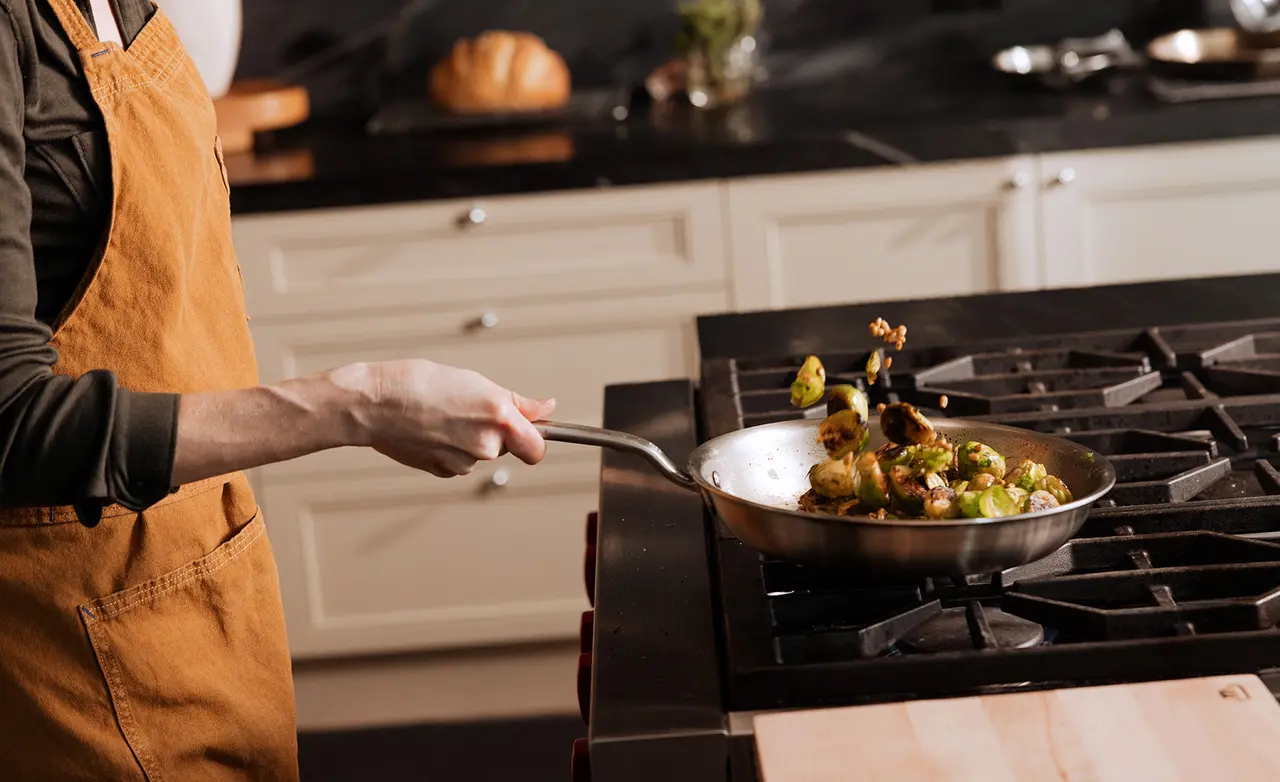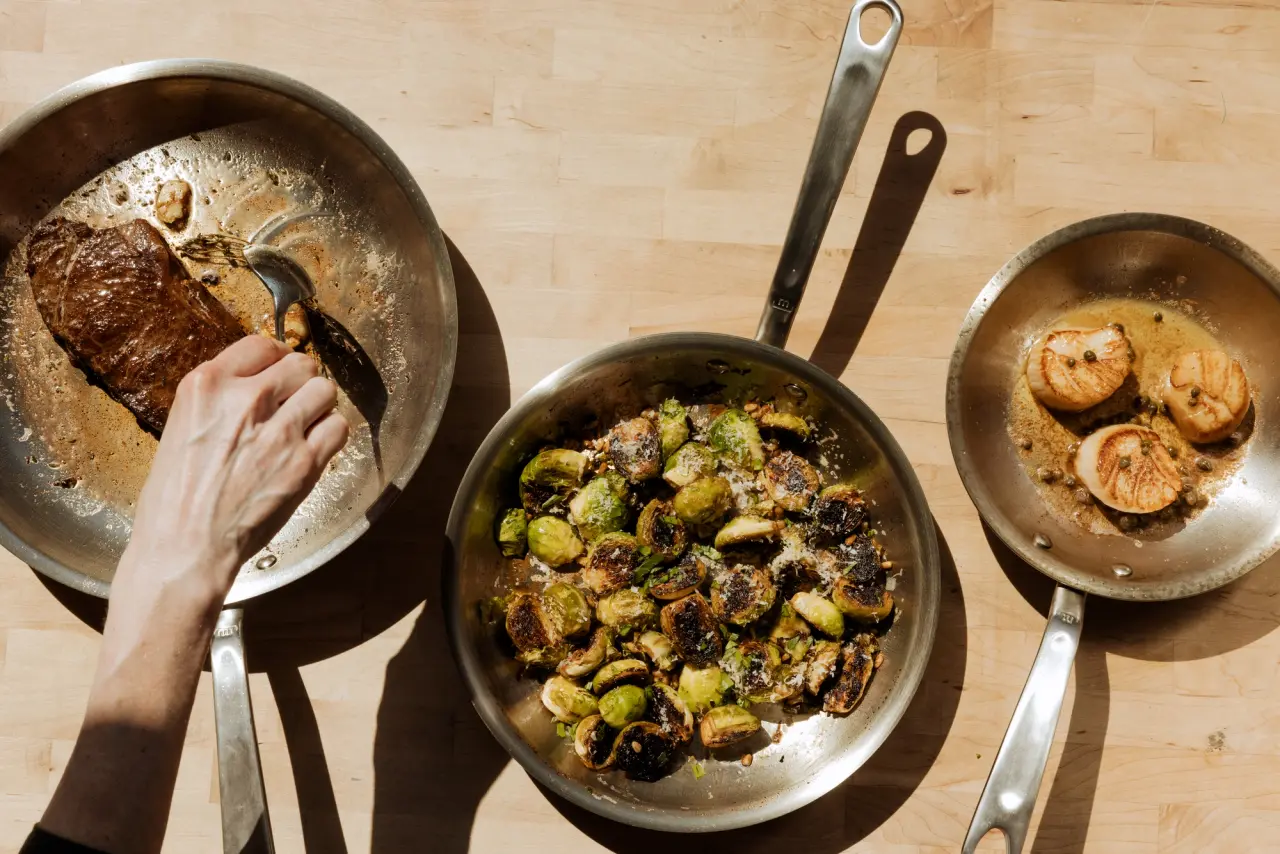We love a multi-purpose knife. From the classic chef knife to the santoku, having at least one high-quality, versatile blade that can handle a range of different cuts is a huge asset in the kitchen. However, when it comes to slicing cooked meats with precision, ease, and efficiency, you need something a bit more specialized.
Enter the carving knife: this long, slender blade is optimized for carving up large-format proteins like turkeys, roasts, and hams—aka, the centerpiece of your holiday table. Here’s what makes for a great carving knife, and why we think it’s an essential component of your holiday toolkit.
What Makes a Carving Knife the “Best”?

There are a couple factors that go into the “best” carving knife.
Blade Material
High-carbon stainless steel is the absolute best choice for a carving knife in our books. Carbon steel is exceptionally hard and durable, which translates to a super sharp, precise blade with excellent edge retention. Lower-carbon blades are typically softer, requiring more frequent sharpening to maintain a precise cutting edge.
Length and Flexibility
As opposed to the thicker shape of a chef knife or santoku, a carving knife’s long, lean profile helps the blade slide cleanly through proteins without dragging or tearing. This allows you to control the thickness of each slice, and won’t turn your tender roast into a ragged mess on your guests’ plates. In addition, a high carbon stainless steel blade offers both hardness and flexibility, enabling the user to more easily maneuver around joints and bones.
Handle Comfort
It’s not all about the blade: your carving knife should also have a comfortable, ergonomic, easy-to-grip handle, ideally made from a high-quality plastic like POM, which we use to make most of our knife handles (including the handle of our Carving Knife). This helps the blade feel stable and balanced in your hand and won’t cause cramping or slippage.
How to Choose the Best Carving Knife for Your Needs

Even if a carving knife isn’t the most-used knife in your block, it’s still an important one to have. Here’s the factors to think through to find the best one for you.
Type of Meat
For tougher or bone-in meats like leg of lamb or prime rib, you’ll want a sturdier (but still somewhat flexible) blade to help slice through muscle and tendon. For a softer protein like fish, however, a more flexible blade can help you more easily navigate around small bones and separate skin from delicate filets (you can also opt for a Fillet Knife, which is expressly designed for this purpose).
Care and Maintenance
Proper maintenance is incredibly important to the usefulness and longevity of any knife, including a carving knife. Improper care—such as leaving your knife to soak in the sink, cutting on hard materials like marble or glass, or neglecting to hone or sharpen your knife—can dull or damage the blade and make it harder to cut with. Here’s how to take care of most varieties of kitchen knife, from proper cleaning and storage to sharpening and honing.
You can also make it easier on yourself by opting for a stainless steel knife: our high-carbon stainless steel Carving Knife is rust- and corrosion-resistant, and can hold an edge for longer— though it’s also soft enough to easily hone or sharpen on a regular basis.
How to Use a Carving Knife Properly

When it comes to using a carving knife—or any kind of kitchen knife—the top priority is safety. In addition to having a strong, balanced knife that you feel comfortable holding, you should also make sure that your blade is sharp: we know we’ve mentioned this a million times, but a sharp blade really is safer than a dull one, which can easily slip and cause serious injury (not to mention, make carving your roast a much more labor-intensive task).
You can maintain the sharpness of your knife by storing it in a knife block, knife organizer, or on a magnetic bar. A proper cutting board is also essential for maintaining knife sharpness: go for plastic, soft wood, or a paper- or wood pulp-based composite material.
The second order of business is ensuring that you have the proper grip on your knife. We recommend the “pinch” grip, which involves wrapping your pinky, ring, and middle finger around the handle, right beneath the spot where the handle meets the blade. Your pointer finger and thumb should be pinching either side of the blade.
Once you’ve got a good grip on your knife, you can start carving, using long, even strokes to achieve clean, consistent slices. This is different from the “push-pull” chopping method, which you’d use with a chef knife. Use the narrow tip of the carving knife to maneuver around skin, bone, and joint.
Ready to Shop?
Cooking a large meal with multiple sides, a main dish, starters, hors d’oeuvres, drinks, and dessert is a major feat, and one that takes plenty of planning, time, and organization to pull off. Yet while there’s no such thing as an “effortless” Thanksgiving dinner in our books, there are a few tools—like a carving knife—that can make prepping your holiday meal a little less rough.
Our full tang, fully-forged stainless steel Carving Knife is well worth the space in your knife drawer, even if you only use it once a year (though we doubt that you will).

























